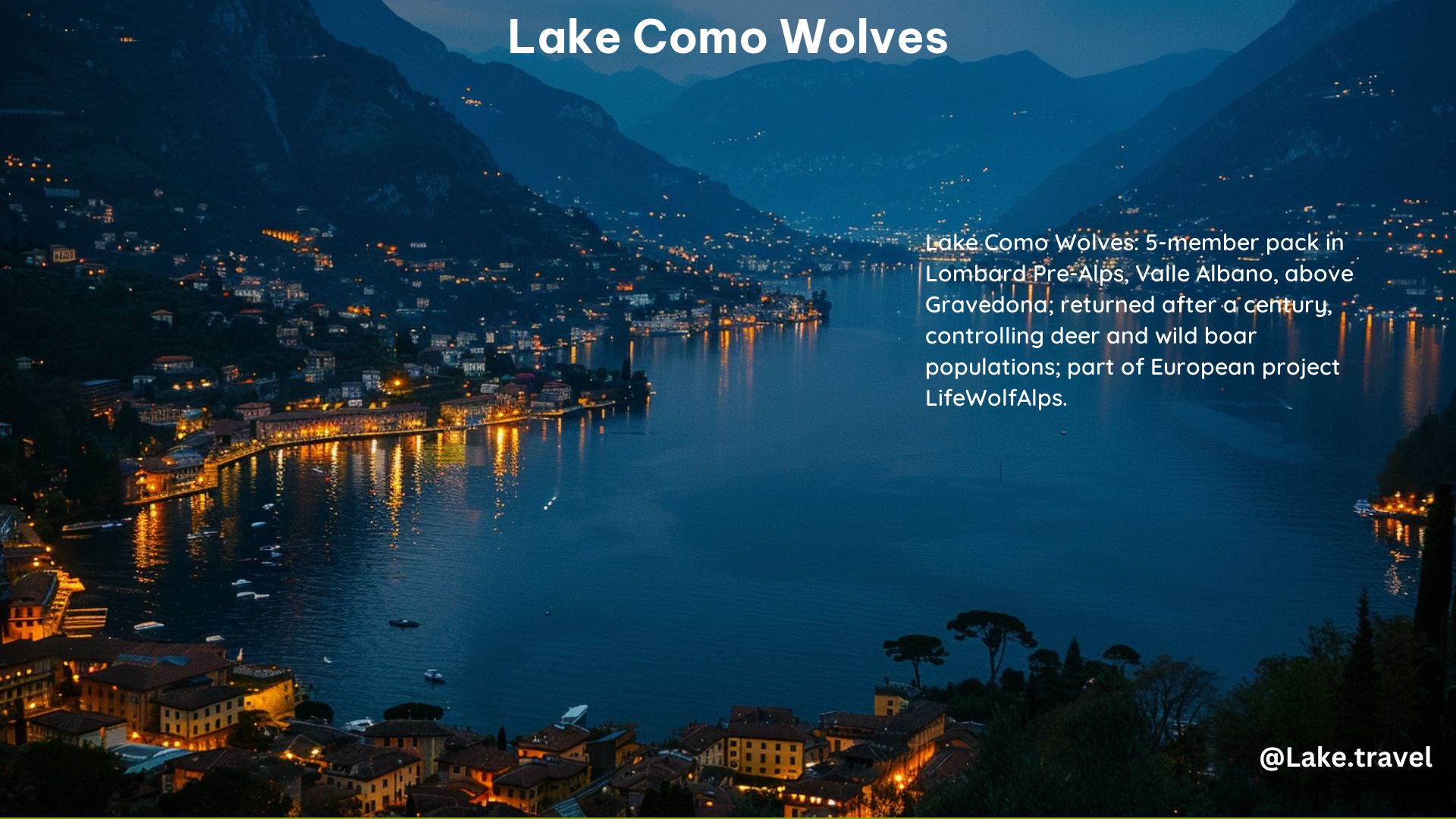Lake Como, nestled in the heart of the Italian Alps, is home to a thriving population of wolves that have been making a remarkable comeback in the region. These magnificent creatures, once absent from the area for nearly a century, have now reclaimed their rightful place in the local ecosystem, captivating the attention of nature enthusiasts and conservationists alike.
Habitat and Distribution of Lake Como Wolves
The wolves of Lake Como have found their stronghold in the Valle Albano region, near the town of Garzeno. This picturesque valley, with its rugged terrain and abundant wildlife, has provided the perfect sanctuary for these predators. In 2015, a pack of five wolves was identified in this area, marking the first confirmed sighting of the species in the region since their disappearance.
Beyond the Valle Albano, the wolves’ territory extends across the Swiss border, giving them access to a vast expanse of over 200 square kilometers to roam and hunt. While the Lombardy region as a whole hosts fewer wolves compared to neighboring areas, the presence of these apex predators in the Lake Como area is a testament to their resilience and adaptability.
Population and Packs of Lake Como Wolves

The Lake Como region is home to at least one well-established wild wolf pack, which straddles the border between Italy and Switzerland. This pack is believed to be the largest in the area, consisting of seven individuals based on observations in the Province of Brescia around Ponte Legno.
In addition to this established pack, there have been occasional sightings of lone wolves in other parts of the province, and it is possible that a previously unrecorded pack may be inhabiting the Valsolda area to the north of Porlezza. These sightings highlight the growing presence of wolves in the Lake Como region and the ongoing efforts to monitor and understand their population dynamics.
Diet and Hunting Habits of Lake Como Wolves
As carnivorous predators, wolves in the Lake Como region primarily consume meat, with an average daily intake of 3-6 kilograms. This translates to approximately 20 deer per year, making them a crucial part of the local ecosystem’s balance.
The wolves’ main prey includes wild deer and wild boar, both of which have seen a significant increase in population in recent years. This abundance of prey has provided the wolves with a reliable food source, allowing them to thrive in the region.
Human Interaction and Conservation Efforts
The return of wolves to the Lake Como area has not gone unnoticed, with sightings often generating significant attention in local media. This ongoing interest highlights the importance of fostering a positive relationship between humans and these apex predators.
To this end, the Life Wolf Alps project, a European initiative, aims to improve wolf-human coexistence and monitor wolf populations in the Alps. By working with local communities and stakeholders, this project seeks to find a balance between the needs of the wolves and the concerns of the human population.
Historical Context: The Comeback of Wolves in the Alps
The disappearance of wolves from the Alps a century ago was a significant loss for the region’s ecological balance. However, in the early 2000s, these majestic creatures began making a remarkable comeback, first in the Central Apennines and then gradually spreading to other areas, including the Lake Como region.
This resurgence of wolves in the Alps is a testament to the resilience of the species and the ongoing efforts of conservation organizations to protect and restore their populations. As the wolves continue to reclaim their rightful place in the local ecosystem, the Lake Como area has become a prime destination for nature enthusiasts and wildlife enthusiasts alike.
In conclusion, the Lake Como wolves are a captivating and integral part of the region’s natural heritage. Their return to the area has not only restored ecological balance but has also sparked a renewed interest in the conservation and coexistence of humans and these majestic predators. As we continue to explore and appreciate the wonders of Lake Como, the presence of these wolves serves as a reminder of the delicate balance of nature and the importance of preserving our wild spaces.
Reference:
– Life Wolf Alps Project
– Wolves in the Italian Alps
– Wolves in Switzerland
